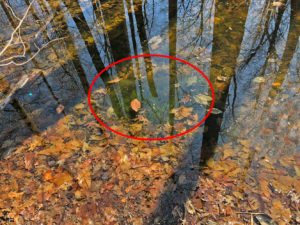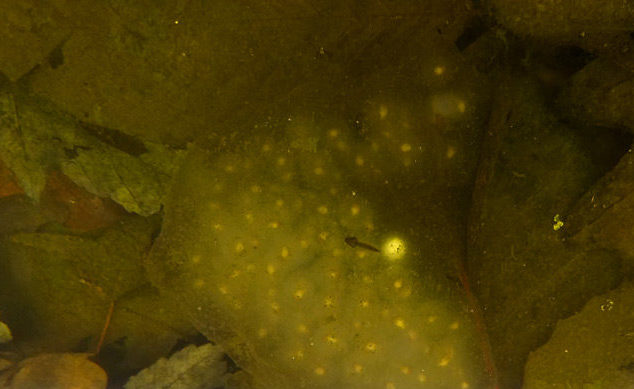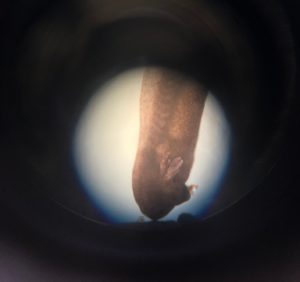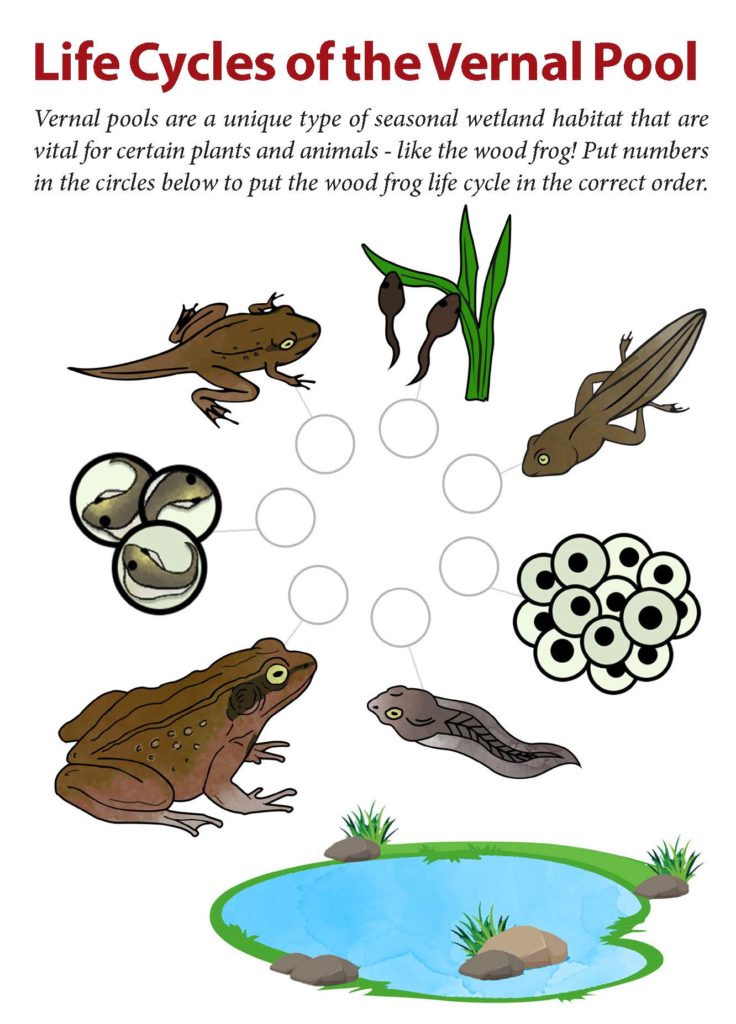A vernal pool is a temporary body of water that is cut off from all flowing water sources such as streams and rivers. They are usually filled by snowmelt and spring rains toward the beginning of the growing season. Most vernal pools dry up by mid-to-late summer, though larger habitats last through the year and only dry up during droughts.
A variety of organisms rely on these temporary water bodies for their development and survival. Many of these species depend on water for only a portion of their life cycle. Animals and plants that need to be underwater for their entire life would not be able to survive in a vernal pool for very long. Fish are generally absent from these pools, but humans will sometimes intervene and add fish. This is life-threatening to the organisms that rely on these fish-free, temporary habitats for the survival of their eggs. It’s also detrimental to the fish; once the pool dries up, they will have no way to get to another body of water.

Wood frogs are a species of amphibians that use vernal pools as a nursery for their eggs and tadpoles. In early spring, male frogs will congregate around pools, usually very near the pool they were hatched in, and call for females. They sound surprisingly like ducks quacking in the middle of the forest! Females will eventually come to the pool and choose their mate. The male frog will hold onto the females back, wrapping his front legs around her torso. They will stay connected in what is called amplexus until the female releases her eggs. The male will release his sperm over the eggs as they are laid, fertilizing them externally.

Females will lay between 1,000-3,000 eggs in a season. The eggs are very small when they are inside her, but expand once they are placed in the water. When the tadpoles hatch they will begin to feed on detritus and algae in the pool. It takes approximately 50-80 days for the larvae to metamorphose into adult frogs, and is highly dependent on temperature. Small adult wood frogs leave the pool once they are fully developed, and move into the surrounding woodland to hunt small invertebrates.
There are many predators in and around the vernal pools that could easily prey on a defenseless wood frog egg or tadpole. Aquatic invertebrates such as caddisfly larvae and dragonfly nymphs are a dangerous threat to eggs and young tadpoles. Other amphibians, such as spotted salamanders, will also lay their eggs in these pools, only their tadpoles are carnivorous and will eat wood frog young if they can catch them!


Springtime is the best time to observe the incredible frenzy of vernal pools. Find some of the many vernal pools on the Watershed Reserve to get a closer look or find one near you!

